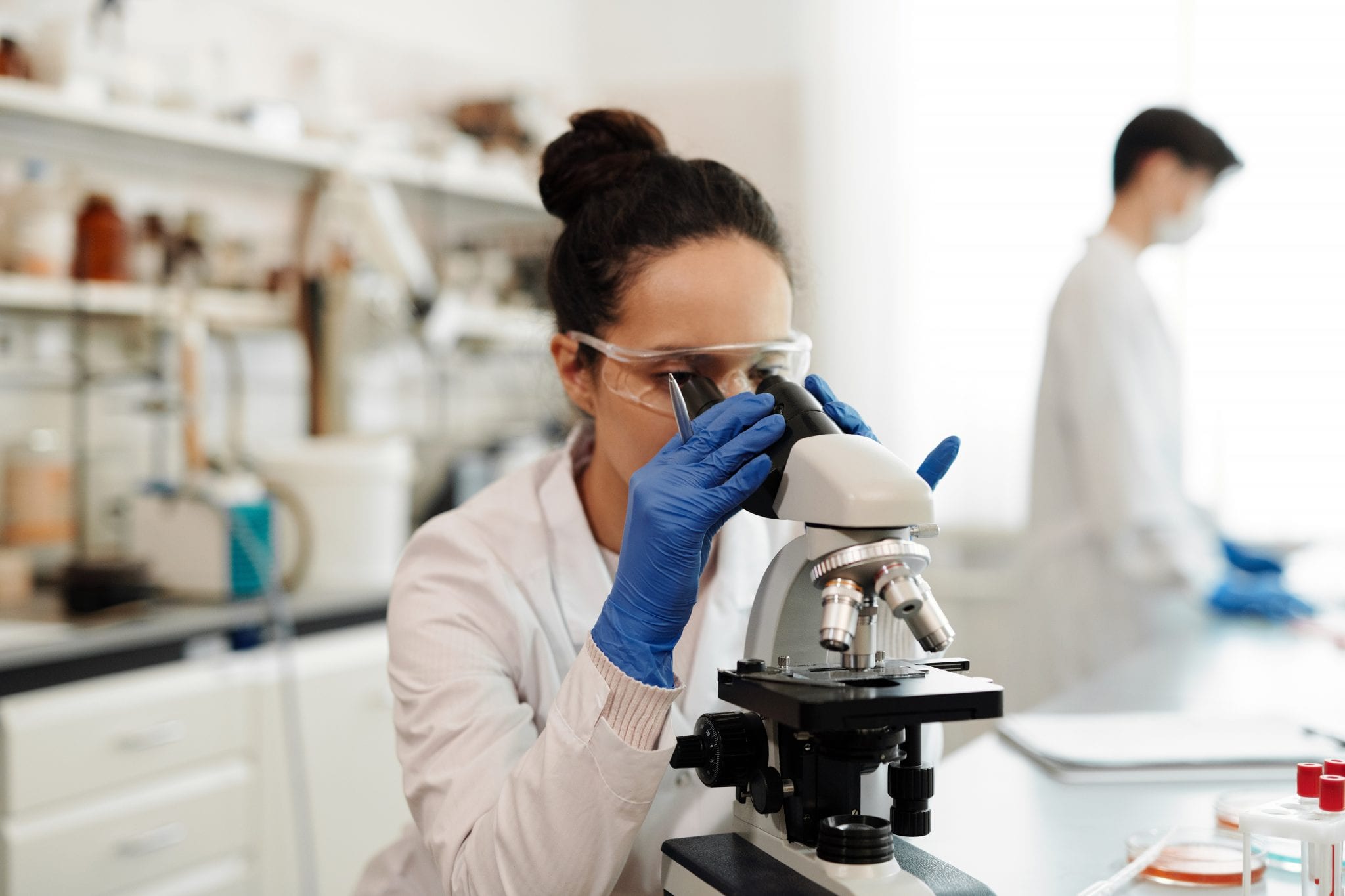TK2 Deficiency: Everything you need to know about this mitochondrial disease
If there is a single fact we all remember from science class, it is that the mitochondria are the powerhouses of a cell. Trillions of cells in the human body rely on mitochondria to produce energy. With energy, the body can digest food, inhale oxygen, and move the muscles. Defects in the TK2 gene interfere with energy production. This causes the rare genetic disease TK2 deficiency.

TK2 Deficiency: What Is Mitochondrial Disease?
Trillion of cells exist within the human body. Inside each cell are mitochondria. Mitochondria serve as the powerhouses of the cells—producing adenosine triphosphate (ATP) which provides energy for the cells to carry out the necessary functions. From digesting a meal to walking around the mall, the body only has energy for those tasks because of mitochondria.
To produce ATP, mitochondria require proteins from mitochondrial DNA (mtDNA) and the DNA stored in the nucleus of cells. Errors in either lessen the amount of ATP needed for the cells to function. These “errors” or mutations that prevent the from producing energy cause a mitochondrial disease.
TK2 Deficiency: What Does the TK2 Gene Do?
The TK2 gene is responsible for making the thymidine kinase 2 enzyme. In a healthy individual, thymidine kinase 2 restores mtDNA if it becomes damaged. When the gene is mutated, thymidine kinase 2 cannot perform proper mtDNA maintenance. That means the body’s mitochondria rely on damaged mtDNA and the overall energy the cell produces decreases.
What is TK2 Deficiency?
Also called thymidine kinase 2 deficiency, TK2 deficiency is a rare genetic mitochondrial depletion syndrome first discovered in 2001. Mutated variants of the gene effect the mitochondria’s ability to provide energy for cells throughout the body. The disease is characterized by progressive muscle weakness (myopathy), difficulty breathing, trouble chewing and swallowing, and drooping eyelids. Severe cases have detrimental effects to the nervous system like seizures and cognitive impairment. TK2 deficiency is found in infants, adolescents, and adults of both genders. Younger patients have a severe form of the disease that progresses more rapidly.
Causes of TK2 Deficiency
TK2 deficiency is genetic. This means it runs in families. It is inherited in an autosomal recessive manner. Both parents must carry one copy of the mutated gene. A child who receives two copies of the mutated gene expresses the disease, whereas the parents with one copy do not experience symptoms. Over 50 known mutations cause TK2 deficiency.
Symptoms of TK2 Deficiency
No two patients with TK2 deficiency are identical in presentation. There is a large spectrum that ranges from mild to severe. Mitochondria are involved in almost every system in the body. Being that the mitochondria do not have sufficient energy to function, the symptoms of TK2 deficiency are myopathic and stem from progressive weakness in the skeletal muscles. Patients have a combination of these symptoms:
- Muscle weakness
- Decreased muscle tone (hypotonia)
- Trouble breathing
- Fatigue
- Hearing loss
- Seizures
- Difficulty swallowing (dysphagia)
- Abnormal gait
- Drooping eyelids (ptosis)
- Poor reflexes
- Cognitive impairment
- Loss of motor skills
- Inability to move eyes (ophthalmoplegia)
How TK2 Deficiency Affects the Brain
TK2 deficiency affects the brain. In a published in the Journal of Genetics, up to 16 percent of patients had recurrent seizures (2018). Patients also exhibited encephalopathy. Changes in brain activity led to cognitive impairment. Older children are prone to delayed mental development. They struggle with skills like attention, reasoning, and memory.
Imaging studies show significant alterations in brain structure and function. Someone with TK2 deficiency may have cerebral atrophy in the brain hemispheres, as well as abnormalities in myelination. Nerves in the brain lack connections to communicate essential messages to the nervous system.
Childhood Onset of TK2 Deficiency
Onset of TK2 deficiency can occur in infancy, childhood, and adolescence. The earlier the individual presents with symptoms, the faster the disease progresses. Younger patients with TK2 deficiency are more likely to experience severe respiratory failure that requires mechanical ventilation. Children are prone to extensive myopathy (muscle weakness) that damages the cranial and spinal nerves.
Adult Onset of TK2 Deficiency
20 percent of TK2 deficiency cases occur in adulthood. While adults with TK2 deficiency do have symptoms in childhood, most do not receive a diagnosis until later in life because the condition progresses at a slower rate. In comparison to childhood onset, the signs and symptoms if the disease vary. Whereas children have profound respiratory effects, adults experience increased facial and proximal limb weakness.
Diagnosing TK2 Deficiency
TK2 deficiency is rare. Many patients are diagnosed with other conditions before arriving at the correct diagnosis because symptoms are similar to other neuromuscular disorders.
Since it is genetic, TK2 deficiency is confirmed through genetic testing. A physician suspecting TK2 deficiency performs whole exome sequencing to look for mutations in the TK2 gene. However, other tests can provide evidence of the disorder. Elevated levels of creatine kinase (CK) and lactic acid in the blood indicate muscle weakness and an electromyography reflects muscle function. Additionally, a muscle biopsy is helpful for diagnosis. Patients with TK2 deficiency have ragged red fibers when their muscle samples are examined under a microscope and mitochondrial cells have depleted mtDNA.

Managing TK2 Deficiency
There is no cure for TK2 deficiency. Because it impacts multiple body systems, management includes the help of a team of specialists such as a neurologist, pulmonologist, gastroenterologist, geneticist, and physical therapists. Patients may require any of the following treatments or interventions.
- Mechanical ventilation—Respiratory failure is common amongst patients with TK2 deficiency. As the muscles become too weak to breathe, some require a ventilator to assist breathing.
- Feeding tube—If swallowing is an issue, or if other parts of the digestive tract are unable to contract to digest food, a feeding tube implanted into the stomach and/or intestines provides nutrition.
- Wheelchair or mobility support—The skeletal muscles are most effected in TK2 deficiency. Wheelchairs, canes, and walkers assist when walking is difficult.
- Physical therapy—Preserving as much muscle function as possible is imperative. In physical therapy, patients are given an exercise regimen to strengthen the muscles and decrease pain.
- “Mito cocktail”—The “mito cocktail” consists of a group of supplements that provide energy to the mitochondria in cells. Examples include Coq10, acetyl-L-carnitine, alpha-lipoic acid, and B vitamins.
TK2 Deficiency Research
Experts still have much to learn about TK2 deficiency and mitochondrial disease. Researchers and biotech companies are investigating options to restore mitochondrial function. By implementing deoxynucleotide combination therapy, the overall goal is to slow the disease progression of patients with TK2 deficiency.
References
Garone C, Taylor RW, Nascimento A, et alRetrospective natural history of thymidine kinase 2 deficiencyJournal of Medical Genetics 2018;55:515-521.
Cheyanne is currently studying psychology at North Greenville University. As an avid patient advocate living with Ehlers Danlos Syndrome, she is interested in the biological processes that connect physical illness and mental health. In her spare time, she enjoys immersing herself in a good book, creating for her Etsy shop, or writing for her own blog.